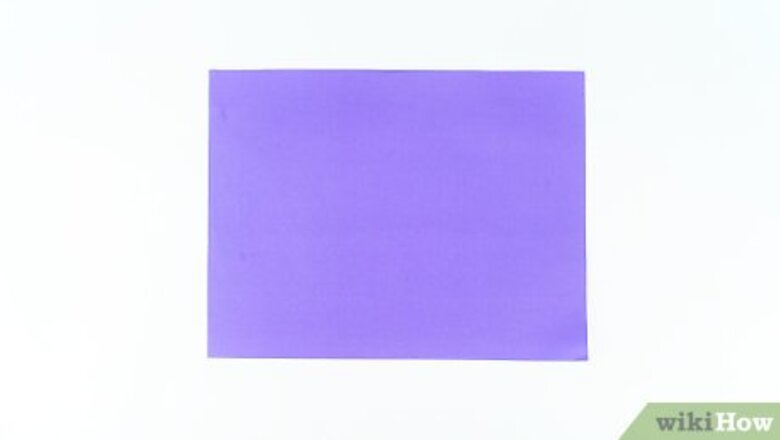
views
Folding the Paper Airplane

Start with a flat sheet of paper. Grab a sheet of paper and lay it in front of you on a flat surface. Make sure the paper you’re using doesn’t already have any folds, creases or wrinkles in it, as this can compromise the completed plane’s ability to fly. It’s recommended that you start with a bigger piece of paper to make learning the folds easier before trying it with other paper types. It’s easiest to make the folds of your airplane from the top of the paper down. For the purpose of following these instructions, a basic sheet of 8.5”x11” (most comparable to A4 paper outside the US) letter paper will work best. You can use shipping paper. Or reuse old paper boxes for this purpose.
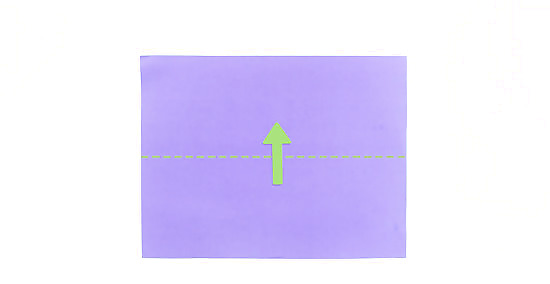
Fold the paper in half lengthwise, then unfold. Turn the paper lengthwise and fold it down the middle. Line up the corners at the top and bottom. Run a thumbnail down the fold to tighten the crease. Then, unfold the paper so that the crease is facing down, with the paper opening like a slight ‘V.’ The center crease is made to serve as a reference point for later folds. You can also fold the paper in half width-wise, if you choose. This will help guide the first couple of vertical folds you make.
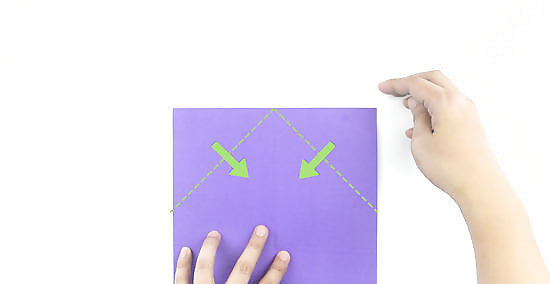
Fold down the upper corners. Take both corners and fold them down until they’re even with the center crease. Press the creases to hold them in place. The folded corners will form a large triangle at the top of the paper.
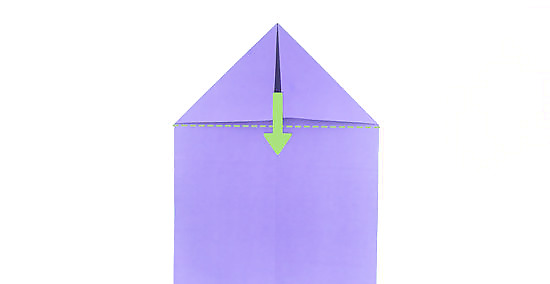
Fold down the top triangle. Fold over the triangle made by the folded corners. The paper will now resemble an envelope, with a square base and the top triangle pointed down at the bottom of the paper. This shape will serve as the body of the plane. Leave 2-3 inches (5-7.5cm) of space between the point of the triangle and bottom of the paper. Folding the paper over on itself adds weight to the plane as it reduces its size, giving it the heft to allow it to fly farther.
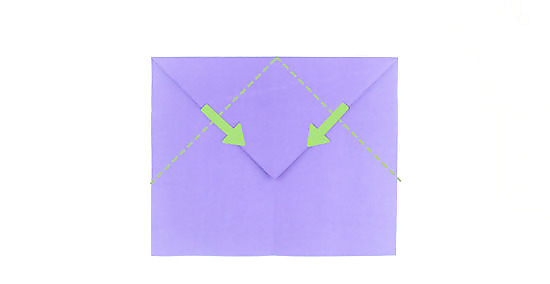
Bring the corners in so they meet in the middle. Carefully fold the top corners down again until they align with the center crease. Stop short of overlapping the previous fold to leave a small triangular tip exposed at the bottom of the new fold. You want this triangular piece to be about an inch (2.5cm) long. This last folded point at the top of the paper will serve as the nose of the plane.

Fold up the small triangle. Fold the triangular flap at the bottom up and over the angled folds you just made to secure them. Make sure the tip of the small triangular piece is lined up with the center crease. This fold is especially important, as it allows the plane to hold its shape and works to balance it during flight. The technique of using a triangular flap to secure a fold is known as the "Nakamura lock," named after the origami practitioner who invented it.
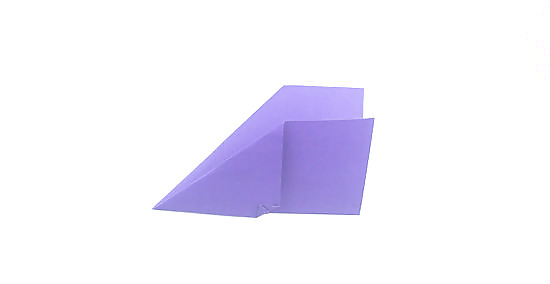
Fold the paper outward to form the body of the plane. Now, fold the entire paper in half outward, in the opposite direction that you made the original center fold. The extra triangular fold will be at the bottom of the completed plane and will help provide weight and stability. You should be able to see the final size and shape of the plane coming together. Folding the paper back on itself wraps the lower triangular piece around the outside of the bottom of the plane, holding it in place and making it easier to grip and throw.

Make one last fold to form the wings. Lay the paper on one side and fold the top flap down until the upper corner is even with the bottom of the plane. Turn the plane over and fold the other side. This will form the wings of the plane. Press the creases firmly so they’ll hold. Your paper airplane is now finished! Be careful not to bend the wings while folding them. Go somewhere with plenty of space and give your new airplane a toss. Airplanes made with this design fly far and straight and can reach some pretty impressive speeds.
Making Adjustments
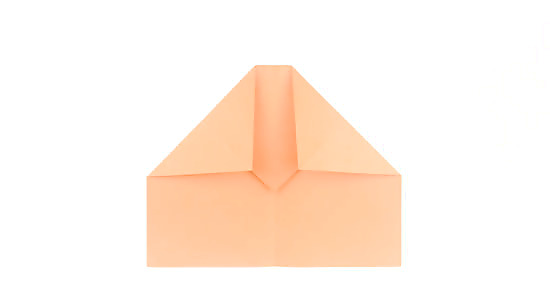
Fold in the nose. One simple variation of this airplane design is to make the nose blunt rather than pointed. To fold this design, simply leave about half an inch (1.25cm) of space on either side of the center crease after you fold the corners that will be secured by the small triangular flaps. The corners will have to be folded at a diagonal angle to leave the top of the paper unobstructed. Blunt-nosed planes give up a little speed but fly much further due to their streamlined construction.
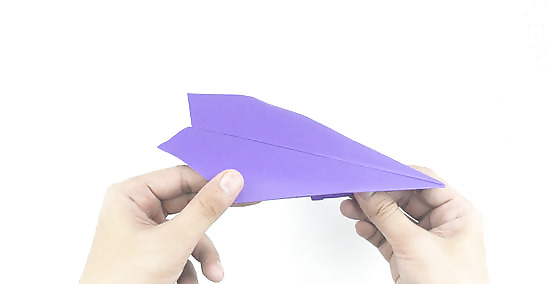
Keep the plane flying straight. When a paper airplane curves too much to one side, it usually means the wings are lopsided. Double check the wing folds and make sure they’re flat, even and at the same height. Make small adjustments, as tampering with the wings too much can soften the paper and decrease loft. It’s normal for the plane to curve a little, so only adjust the wing height if the plane is spiraling out of control when thrown.
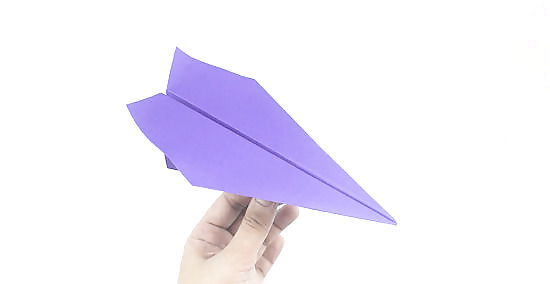
Prevent nosedives. If the plane has a tendency to barrel straight into the ground, there may be an issue with the back portion of the wings. Bend the back edges of the wings upward very delicately so that they’ll be able to catch the air as the plane moves forward. A small bend makes a big difference, so don’t be too forceful or you might warp the wings out of shape. Paper airplanes operate on the same physical principles that allow real planes to fly. A slight curve of the wings is necessary to turn air resistance into lift. Try a blunt-nosed design if your plane has a problem with taking a nosedive. Pointed noses can easily become damaged when they hit the ground.
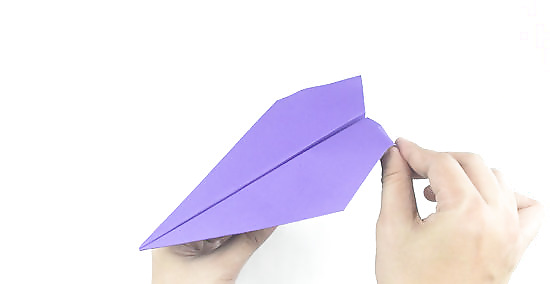
Maintain consistent loft. Another common problem is that the plane arcs upwards, then drops out of the air. The solution to this is the opposite of the one used to correct nosedives: simply bend the back of the wings down slightly until the plane flies straight. Try a few practice throws to make sure the problem is fixed before throwing faster. Attempting to throw too hard can also cause the nose to rise, stalling the plane. Launch the plane with a smooth, straight motion of the arm and wrist to send it on its way steadily.
Choosing the Right Paper
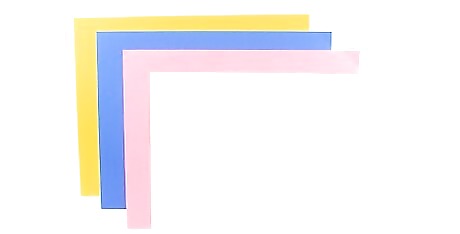
Choose a piece of paper with the right weight. For your paper airplane to soar true, it’s important that you use a piece of paper that is neither too light nor too heavy. In most cases, a standard sheet of 8.5”x11” (A4) letter paper will be the perfect size, weight and thickness to make a plane that when folded correctly will fly for dozens of feet. The flimsiness of thin papers like newsprint keeps them from catching the air, while cardstock, construction paper and other heavier types of paper will create too much drag, and will also be more difficult to fold. You are not just limited to paper, cardboard if cut through the center could be used if needed. The types of paper commonly used in offices—crisp, smooth and perfectly weighted—often make for excellent paper planes. It’s okay to use thinner paper for smaller planes, since the compact size will compensate for the weight difference. Likewise, heavier paper can be used to make oversized planes.

Make sure it’s a standard size. Until you’ve mastered the folding technique, avoid working with papers with unusual dimensions. Most paper airplane folding instructions are given with 8.5”x11” (A4) paper in mind. Altering the height or width of the paper can drastically change how the airplane turns out, and if it’s too wide or too narrow, it may not fly at all. If you’re working with scrap paper, cut or tear it until it’s roughly the proportions of letter paper, then reproduce the folds on a slightly larger or smaller scale.
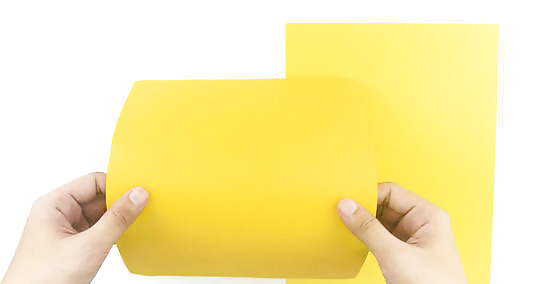
Use paper that accepts a fold. Another advantage of medium weight papers like letter paper and stationery is that any creases you make will stay secure. This is especially important if you want your airplane to fly far and fast, as sloppy, loose folds make the plane less aerodynamic. As a rule, the smoother the paper, the better it will take a fold. Avoid pulpy papers and those with large grains that get mushy when creased. Raw, foil, laminate and glossy papers do not take a fold well. Apply pressure to each crease you make and go over it a couple of times. The neater the fold, the better it will maintain its shape.













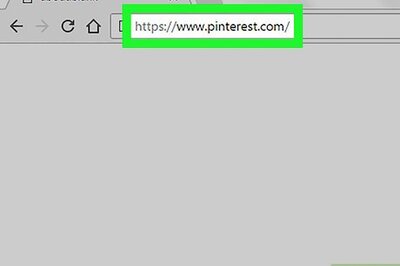
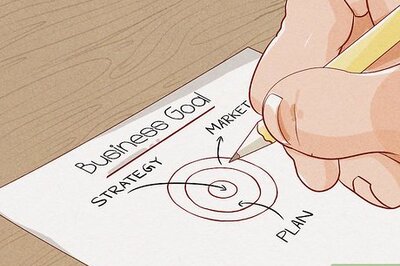
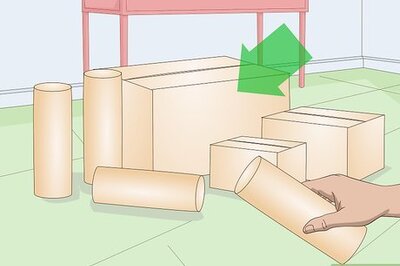
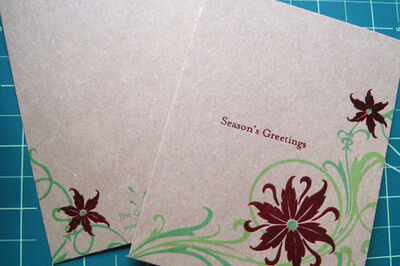

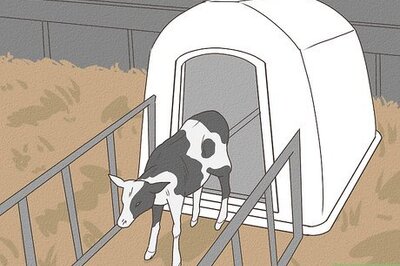

Comments
0 comment